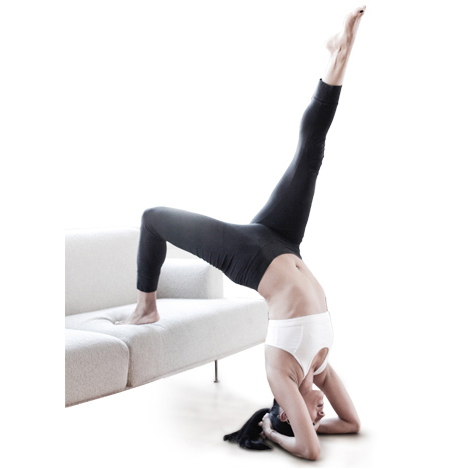After years of teaching and doing yoga, I still struggle with inversions. So much so that I included it on my first post of 2014 as one of my New Year’s “explorations”. I have been practicing “Going Upside Down” several times a week and have finally understood the “tipping point” of inversions which has served as an epiphany in my practice.
Stand up straight and visualize an arrow. Imagine the very top of your head as the arrowhead, your body as the shaft, and your feet as the fletching (feathers). The shaft of the arrow will run directly down the center of your body, very much like your spine into your pelvic floor. Like Mountain Pose (Tadasana), where you are standing at the top of the mat, you want to maintain that very same line and structure when attempting inversions. Before you go completely upside down, you have to bring your body to stack, which is the hardest part of inversions. Stacking is when your joints are aligned so they can rely on each other for support. Once you’re stacked, you will immediately feel the “tipping point” where your centerline will find its natural place. Falling out of inversions won’t happen as often because you will be able to catch your body before it does.
Check out my video! I demonstrate in headstand how the “tipping point” can help you find your center in these very challenging inversions. Try it and let me know how you do!
